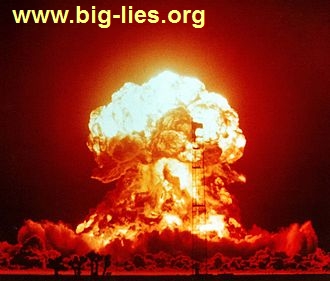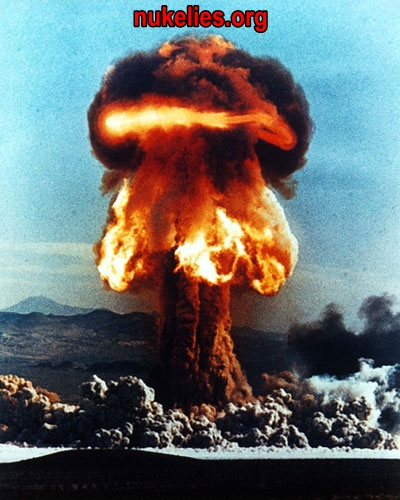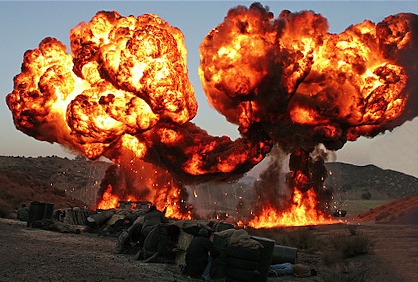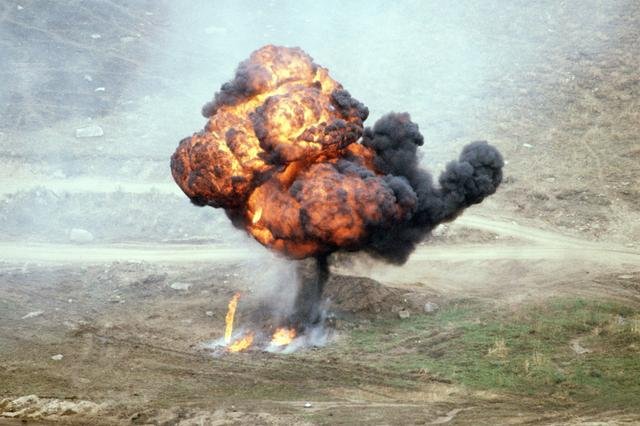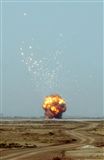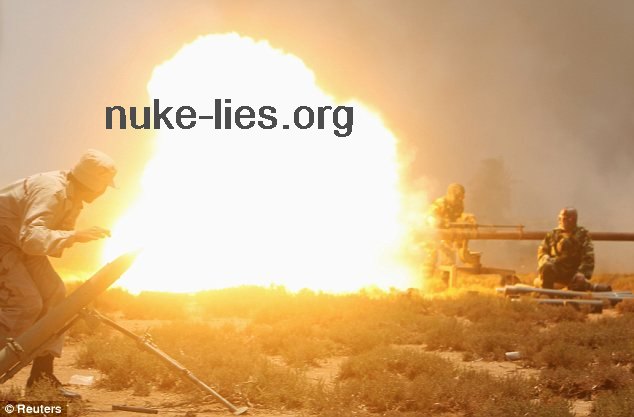rerevisionist wrote: Come to think of it, I've never seen anyone comment on a spectroscopic analysis of an atom bomb, although surely this would be a good way to see what elements were present in such an explosion.
Aha!!. I must be receiving your brain waves from across the Atlantic. Just within the last hour, the thought came to me: Has anyone done a spectrographic analysis of an atomic blast?
I did a google search for "spectrographic analysis atomic blast" and didn't find much.
There was spectrographic analysis of the uranium used:
In 1942 she went into the Wacs and worked
on the Manhattan Project at Los Alamos, NM.. Aunt Myrtle was
responsible for the spectrographic analysis of the uranium to
be used in the atomic bomb. Hers was a quality control job
she had to assure the purity of the U238 that they were
using. From the deserts of New Mexico she gave me, at
varying times, a swedish hunting knife that she had found, a
Harrington and Richardson target 22 caliber pistol, and a
fine pair of english riding boots that were too small for me.
She attained the rank of Captain, and no one in the family
had any idea what she was doing in New Mexico, more on this
later.
After the Second World War she sent my dad a sample of
fused earth from the first atomic bomb blast. It was mounted
on a stainless steel pedestal, with a brass plaque denoting
what it was and had a glass dome to encase it. It was
specimen number 58. A short time later it was recalled to be
resealed in a solid plastic paper weight. It no longer had
the brass plaque, but the brass number 58 is imbedded in the
bottom of the weight. The reason it was recalled was the
danger of radiation exposure.
https://www.oocities.org/rdbachiler/Bachiler_14.htmlKenneth Bainbridge, who was in charge of the Trinity test, seemed to have some specialty, or interest, at least, in spectrographic analysis of some sort.
https://books.google.com/books?id=ngsAAA ... st&f=falseAn account of trinity test:
https://www.cddc.vt.edu/host/atomic/trin ... inity.htmlThe TR-5 Group, responsible for spectrographic and photographic measurements
So there was a group there at the Trinity Test supposed to have done a spectrographic measurement.
The Bausch & Lomb spectrograph and the movie camera with filters were on low
https://www.scribd.com/doc/17428130/Trin ... Bainbridgehttps://library.lanl.gov/la-pubs/00317133.pdfI wonder what became of their spectrograph results?
May 1975, page 46, Bainbridge describes the fire ball at Trinity:
Finally, I could remove the goggles and watch the ball of fire rise rapidly. It was surrounded by a huge cloud of transparent purplish air...
https://books.google.com/books?id=dQsAAA ... ph&f=false